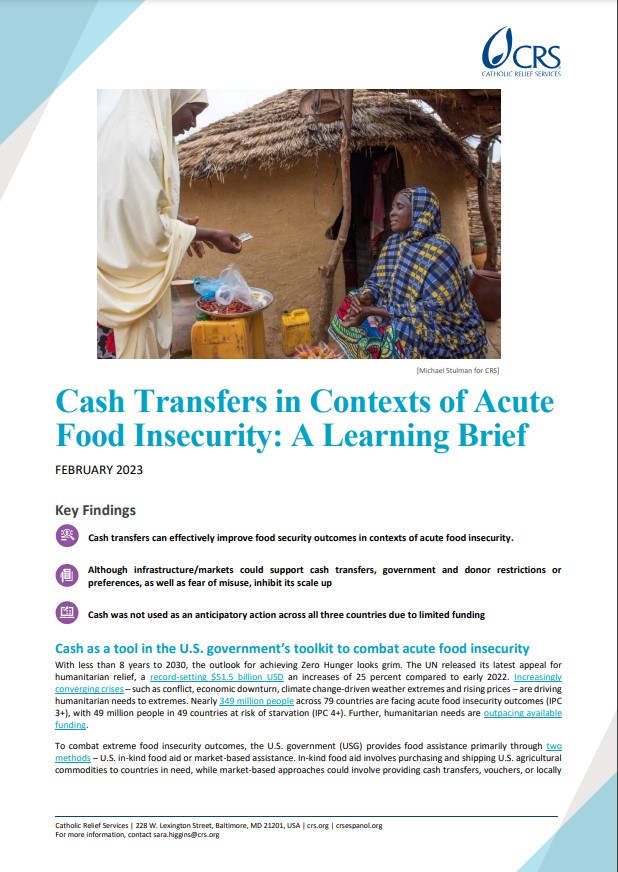
Cash Transfers in Contexts of Acute Food Insecurity: A Learning Brief
With less than 8 years to 2030, the outlook for achieving Zero Hunger looks grim. Nearly 349 million people are facing acute food insecurity, with 49 million people at risk of starvation. Evidence is mounting that cash transfers as a form of assistance can effectively improve food security outcomes. However, various technical and institutional barriers have limited its scale-up. To further enhance the use of cash transfers in contexts of acute food insecurity, CRS urges the US government to adopt the following recommendations:
Congress should:
- Increase flexibility within Food for Peace development programming to allow implementers to use the most appropriate approach for the context
- Increase the level of flexible funding to meet increasing needs
USAID should:
- Apply a neutral position on modality decision-making
- Increase investments to strengthen local capacity for cash transfers
- Strengthen integration of social safety net programs and early warning systems
- Invest in evaluation and learning around various emergency assistance modalities
- Increase investments in “cash plus” or other complementary programming
- Require implementers to provide complementary activities intended to improve nutrition outcomes as part of cash transfer programming (where feasible)
The Administration should:
- Advocate for debt cancellation so low- and middle-income countries can address immediate food and resource needs
The US government’s use of market-based approaches has grown; however, it remains one of the few major donors that still provides large quantities of in-kind food aid. Now is the time to expand our toolbox and scale-up cash-based programming.
Published March 2023


